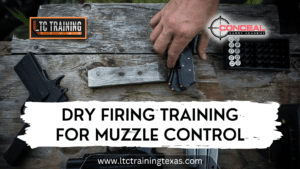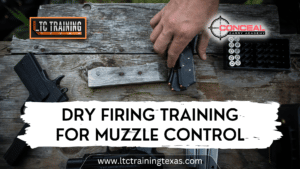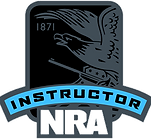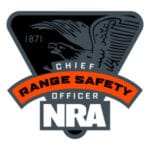Is It Safe To Dry Firing A Glock?

Are you a fan of action movies or video games where heroes use cool guns? Well, one company that makes really amazing guns is called Glock! People who use them say they work really well and they’re super reliable. But did you know that using a Glock properly is really important, so it doesn’t break?
Do you know what “dry firing” means? It’s when you practice shooting a gun without any bullets. Experts who teach people how to be safe with guns, like the ones at Texas LTC Training, want to teach us about dry firing. But if you want to dry fire a Glock, you need to know some important things, so you don’t accidentally damage it. That way, you can have fun practicing and stay safe at the same time!
What is Dry Firing?

Have you ever pretended to shoot a toy gun even though there weren’t any bullets in it? That’s kind of like what dry firing is! When you dry fire a Glock (which is a type of gun), you’re practicing pulling the trigger without any real bullets inside. It’s like doing a pretend shooting drill! But you need to be careful because if you do it too much, it could damage your gun. So, it’s important to know how to do it safely.
What Happens When we Dry Fire?
Have you ever pressed a button and heard a “click,” but nothing happened? That’s kind of what dry firing a Glock is like! When you dry fire a Glock, the hammer inside the gun hits the firing pin, but there’s no real bullet inside.
So, you’ll just hear a “click” sound, but not a loud “pop” like you would with a real bullet. Even though dry firing may not seem like a big deal, it can actually have some good and bad effects on your gun. So, it’s important to learn how to do it safely.
5 Rules for Dry Firing Glock:

Here are 5 rules for dry firing Glock:
Always Make Sure The Gun is Unloaded:
Before practicing dry firing with a gun, you need to make sure it’s not loaded. Take out the magazine and check that there are no bullets in the Chamber by looking inside the gun.
Choose A Safe Location:
Dry firing should only be done in a safe location, away from anyone or anything that could be injured or damaged by a discharged firearm. Always have a safe backstop in case the gun does accidentally discharge.
Use Proper Form And Technique:
When dry firing, use proper shooting form and technique. Focus on your breathing, grip, and trigger pull. Dry firing provides an opportunity to work on and improve these fundamentals without the added noise and recoil of live fire.
Avoid Overuse With Older Firearms:
While dry firing is generally safe for most modern firearms, it can cause wear and tear on older models. If you have an older firearm or are unsure about the impact of dry firing on your gun, consult with a professional gunsmith.
Consider Using Snap Caps:
If you want to practice shooting a gun without bullets and keep your gun safe, you can use something called snap caps. Snap caps are like pretend bullets that won’t hurt your gun. They let you pretend to shoot your gun, but there’s no risk of damage. By using snap caps and following some simple rules, you can safely practice and get better at shooting!
Benefits of Dry Firing a Glock:

Dry firing a Glock, or practicing trigger pulls without live ammunition, is a useful training tool for gun owners. It’s important to note that dry firing should only be done with snap caps, which are dummy rounds designed to protect your gun from damage.
Improves Trigger Control:
Dry firing allows you to practice pulling the trigger without worrying about recoil or loud noise, which can help you develop better trigger control.
Aids in Muscle Memory:
Practicing dry firing can help you develop muscle memory, allowing you to perform the same motion consistently and accurately.
Saves Money on Ammunition:
Dry firing allows you to practice your shooting skills without the cost of live ammunition.
Helps Detect Flaws:
Dry firing allows you to detect flaws in your shooting technique, such as jerking the trigger or anticipating recoil, which can be corrected with practice.
Builds Confidence:
Do you know that practicing shooting without bullets can help you become better at using your gun? It’s called dry firing! Dry firing can help you feel more confident and comfortable with your gun, which can make you better at shooting at the range or in case you need to protect yourself. So, by practicing dry firing, you can become a better shooter and feel more confident using your gun!
In summary, dry firing a Glock is an excellent way to improve your shooting skills and develop better muscle memory and trigger control. It’s a cost-effective and safe way to practice your shooting technique and become more confident with your firearm.
Drawbacks of Dry Firing Glock:

Dry firing a Glock can be a useful way to practice your shooting skills without using live ammunition. However, it’s important to know that there are some potential drawbacks to this practice.
Consider these important factors before deciding to dry-fire a Glock:
Overuse:
Dry-firing a Glock excessively can damage its firing pin and other internal components, potentially causing malfunctions and rendering the firearm useless.
Lack of Real Experience:
While dry firing can help improve your aim and trigger control, it doesn’t give you the same experience as shooting with live ammunition. You may not be able to judge recoil properly or learn how to properly load and handle your firearm.
Confusion with Live Ammo:
Using empty cases or dummy rounds for dry firing can be dangerous if you mistake them for live ammunition. This can lead to accidental discharge and serious injury or death.
Potential Peening:
If you use a rimfire conversion kit and dry fire with it, the edge of the Chamber can become peened or damaged, affecting the accuracy and reliability of your firearm.
Wear and Tear:
Even if you use snap caps, dry firing can still cause some wear and tear on your firing pin and other components over time.
Dry firing can be helpful to get better at shooting, but it’s important to be careful! You need to follow safety rules and be cautious, so you don’t hurt yourself or your gun. You can also use snap caps or other things to make sure your gun stays safe. By being careful and using the right tools, you can practice dry firing and become an even better shooter!
Glock’s Manufacturer’s Thoughts About Dry Firing:

When it comes to firearms, dry firing is a topic of debate among gun owners. While some argue that dry firing could damage the gun, others consider it a useful training tool. In this section, we will discuss Glock’s stance on dry firing.
According to Glock, dry firing the handguns they manufacture is safe. Although Glock does not encourage regular dry firing, the company does not prohibit it either. The company that makes guns called Glock thinks their guns can handle dry firing without getting hurt. They believe that dry firing won’t damage their guns. So, you can practice shooting without bullets, and it’s OK for your Glock!
Dry firing improves shooting skills and saves money on ammunition. Glock deems it safe, but other firearms may sustain damage. Always adhere to manufacturer guidelines for proper use and maintenance.
Snap Caps vs. Dummy Rounds: What’s the Difference?

Snap Caps:
Snap caps are fake bullets that look like real ones. They are designed to protect the firing pin of your gun while you practice dry firing. They work by cushioning the impact of the firing pin, so it doesn’t hit the gun’s Chamber or barrel too hard. Snap caps are often brightly colored, so you can easily tell them apart from real bullets.
Dummy Rounds:
Dummy rounds are real bullets without gunpowder and primer. They look and feel like real bullets, but they don’t have the explosive power to make the bullet fly out of the gun. Dummy rounds are useful for practicing loading and unloading your gun and practicing pulling the trigger.
Why Should You Use Snap Caps And Dummy Rounds?
Using empty bullet cases for dry firing may appear to be a cost-effective option, but it is neither safe nor beneficial for your firearm. The firing pin is not adequately protected by the used case, causing it to become flattened and potentially malfunction.
Plus, if you don’t label them, you might mistake them for real bullets and have an accident. Instead, use snap caps, which are cheap and have cushioning to protect your gun. They also come in a pack, so you can use them again and again.
Which One Is Safer to Use?
Snap caps are generally safer to use for dry firing because they are specifically designed to protect your gun from the stress of repeated dry firing. Dummy rounds can still cause wear and tear on your gun’s firing pin and Chamber if used excessively for dry firing. However, both snap caps and dummy rounds can be used for dry firing, and it ultimately depends on personal preference.
Final Thoughts About Dry Fire A Glock:

Additionally, dry firing can also be a great way to diagnose any issues with your gun, such as a trigger malfunction or an improperly installed part. Dry firing is not just for practicing shooting. It’s also great for learning how your gun feels and how heavy it is. You can try different shooting styles without any bullets! It’s a cool way to get better at using your gun and have fun too.
Plus, it’s a cost-effective way to practice shooting without spending money on expensive ammunition. Just remember to always double-check that your gun is unloaded before dry firing and to follow proper safety protocols. With these precautions in mind, dry firing can be a fun and useful activity for any Glock owner to try out!
How Fast Can I Fire a Glock?
Glocks are fast guns that shoot bullets really quickly. They are semi-automatic guns that can shoot as fast as you can pull the trigger. Some Glocks can shoot up to 1000-1200 bullets in just one minute! That’s a lot of bullets! They shoot out of the gun at a speed of 375 meters per second.
Can I Fire A Glock Underwater?

Did you know that Glocks can shoot underwater? It’s true! This is because the important parts that make the gun shoot are hidden inside the gun’s body. But even though Glocks can fire underwater, it’s still tricky to hit your target. Your aim will depend on how far away your target is and what kind of bullets you’re using, like full metal jackets or federal hollow points. Some people like to show off their underwater shooting skills on YouTube, like Edwin Sarkissian.
Is It OK to Carry a Glock with one Round in the Chamber?
If desired, a Glock handgun can be stored with a round in the Chamber, as the entire firing system is designed to handle the stress of this position. Although some individuals may have concerns about the added pressure of the trigger, it is not a cause for worry.
There are also concerns that it could damage the magazine spring and make the gun accidentally fired, but there is no proof that this is true.
Glocks have been used safely for many years, so you can trust that they are designed to work properly. Just make sure to always follow proper gun safety rules when handling a firearm.
How often can We do Dry Firing a Glock?
You can dry-fire a Glock as much as you want if it’s a centerfire one. However, if you have a .22 rimfire conversion kit installed, you cannot dry fire any rimfire because it could damage the gun.
Why Do Glocks Have 2 Triggers?

Glocks have 2 triggers to make sure that the gun won’t go off accidentally. The first trigger fires the gun, while the second trigger is inside the first one and helps to keep the gun safe. This means that even if you accidentally bump the first trigger, the gun won’t fire. The second trigger helps to prevent accidental discharge and keeps you and others around you safe.














